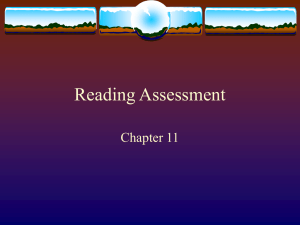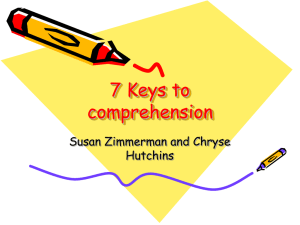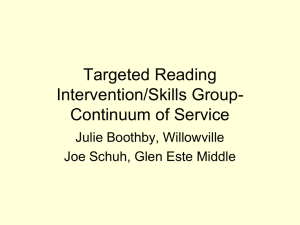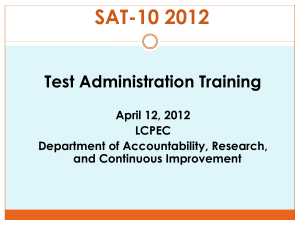SAT Parent Night Kindergarten
advertisement
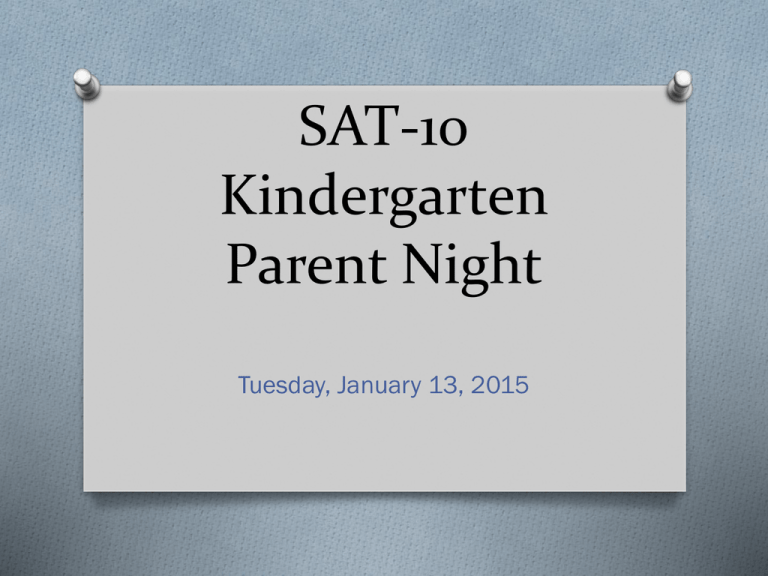
SAT-10 Kindergarten Parent Night Tuesday, January 13, 2015 Preparing for the SAT-10 O Ms. Barrera O Mrs. Triana O Mrs. Leon O Mrs. Travieso O Ms. Ruiz O Mrs. Baluja O Mrs. Valdes O Mrs. Caballero O Mrs. Campos Welcome - Agenda O What is the SAT (Stanford Achievement O O O O Test)? The Big Six Skills tested on the SAT Math SAT skills How to help your child at at home Introduction to the SAT O The Stanford Achievement Test Series, with a rich history dating from the twentieth century, measures students’ school achievement in Reading, Language Arts and Mathematics. This Tenth Edition of the Stanford battery (Stanford 10) provides updated content that reflects the national curriculum and educational trends of the end of the twentieth century. What is the SAT-10? O The SAT-10 (Stanford Achievement Test) consists of two levels that measure the achievement of children in kindergarten and the first half of first grade. O The SAT will measure children’s skills in the domains of reading and mathematics. O It’s purpose is to assess the cognitive development of children in order to establish a baseline where instructional experience may best begin. The Big Six O Phonemic Awareness O Phonics O Fluency O Comprehension O Vocabulary O Oral Language Phonemic Awareness O The knowledge that all letters stand for a sound O When sounds are put together, words are formed O Students must know all letters and their sounds “A” makes the “a” sound as in apple. Phonics O The ability to put letter sounds together to make words. O -at word families b at = bat c at = cat O -en word families h en = hen p en = pen d en = den Fluency O Fluency is how fast or slow a child can read at their independent reading level. O Fluency can be practiced through choral reading; reading together with your child. O Modeling good reading is also beneficial for children to understand what good reading should sound like. Comprehension O Comprehension is understanding what is read or what a student reads. O Oral comprehension is always higher than independent reading comprehension. O In order to help your child with reading comprehension, it is important to ask questions while reading. For example: Who are the characters? Where did the story take place? What is the problem? What is the conflict? Ask your child: What happened in the beginning of the story? What happened at the end of the story? These are just some examples. Vocabulary How to build vocabulary? O Oral comprehension O Oral language – daily experiences O Discussions in class O Reading books O High Frequency Words Oral Language O Our ability to understand and pronounce English words demonstrates that we use a vast number of rules in the English language. How to help your child succeed in reading O Read to or with your child everyday. O Demonstrate the importance of reading by example. O Use time in the car, at restaurants, supermarkets to show how important it is to be able to read. O Create flash cards with sight words and practice them everyday as part of the home learning assignment. Continue…How to help… O Use word families to help children learn how O O O O to segment and blend sounds together. Read nursery rhymes Visit the library and use age and grade appropriate books Create your own home library of books that your children will enjoy reading. Books of interest, such as dinosaurs or sea animals, etc. Make reading together a fun event that your children will look forward to each day. Second Language Learners O For students who are learning English as a second language 1. Label objects around the home, such as: mirror, table, chair, refrigerator, bed, window 2. Listen to stories on tape in order to learn how words are pronounced correctly in the English language. Make sure to follow along with the books and recognize words being read on actual print 3. Use media and technology as a resource Media and Technology for Second Language Learners O PBS Television has resources such as: Super Y, O O O O Word Girl and Sesame Street that are great for language acquisition. www.starfall.com is a great resource for PreReading and Reading Skills Leap Frog DVD’s such as: Letter Factory and Word Factory. Leap Pads are also excellent tools. www.tumblebooks.com available through the parent and student portal www.abcmouse.com (Not free) annual fee Reading Comprehension Skills O Sequence of Events O Compare and Contrast O Cause and Effect O Author’s Purpose O Predicting and Inferring O Understanding Characters and Setting O Main Idea Some things that may be seen on the SAT-10 O Concepts of Print O Word Matching O Letter Recognition O Letter Recognition in Text O Rhyming O Letter Sound Relationships – Single Consonants O Word Reading Skills Tested on the SESAT-2 O Printed Word to Spoken Word O Printed Word to Picture O Dictated Word to Printed Word O Sentence Reading O Letter Sound Relationships- Consonant Blends/Diagraphs Concepts of Print O Which one of these is a sentence? Mark the space next to the one that is a sentence. O He is little. O Ve3qs O What/is/how Word Matching O Mark the space under the word that is the same as the first word. O Where white there where Letter Recognition O Mark next to the letter m…m. O R O M O N Letter-Sound RelationshipsConsonant Blends/Diagraphs O Mark the space under the picture that begins with the letters you see. O Br Printed Word to Spoken Word O Mark next to the word monkey…monkey. O Monkey O Maybe O morning Printed Word to Picture O Look at the picture; then mark the space next to the word that names the picture. O Has O Whole O House Multiple Printed Words to Picture O Look at the picture. Next to the picture there are two rows of words. In each row, mark under the word that tells something about the picture. O Basket O sleeping O flowers O Watering O Between O hungry Onset - Rime O That pot is hot! Simple Sentence O They walk to school. Mathematics O Identify numbers 1-100 O Skip Counting by 2’s, 5’s and 10’s O Be able to count forward and backwards O Addition O Subtraction O Tell time, read a clock O Identify coins – coin value O Calendar skills – be able to read a calendar Mathematics Continued O Patterns O Number Word Recognition O Ordinal Numbers O Fractions – Symmetry O Measurement O Capacity Number Recognition O Students must be able to identify all numbers from 1-100 O Be able to match number words with the numbers Choose the number word for 2. five one two Skip Counting O Students must be able to skip count by 2’s, 5’s and 10’s O 2, 4, 6, 8, 10 …. to 100 O 5, 10, 15, 20 …. to 100 O 10, 20, 30, 40 …. to 100 Addition and Subtraction O Students must be able to subtract using different terminology such as: take away, minus, less than, and the difference of. O Students must be able to add using different terminology such as: in all, all together, the sum of, and join. Forward and Backward Counting O 1, ___ 3, 4, 5, ____ 7 , 8, ___. O 10, 9, 8 ____, 6, ___, 4. Time - Clock O Students need to be able to read a clock to the hour and half hour on an analog and a digital clock. Calendar O Students must be able to read a calendar and identify the month of the year and days of the week. O What day of the week is the 13th? Money O Students must be able to recognize the value of coins. O Quarter O Dime O Nickel O Penny Patterns O Students must be able to understand, recognize and repeat a pattern. O abababab O abbabbabb O abcabcabc Fractions - Symmetry O Understand what is a fraction of a whole. O Whole O 1 Half O 1 Quarter Measurement O Students should be able to measure in inches. O Understand how to use a ruler and other measuring tools in its appropriateness, such as: a measuring cup and a jug. Thank you for attending our Parent Night! Let’s work together to help your child succeed.



